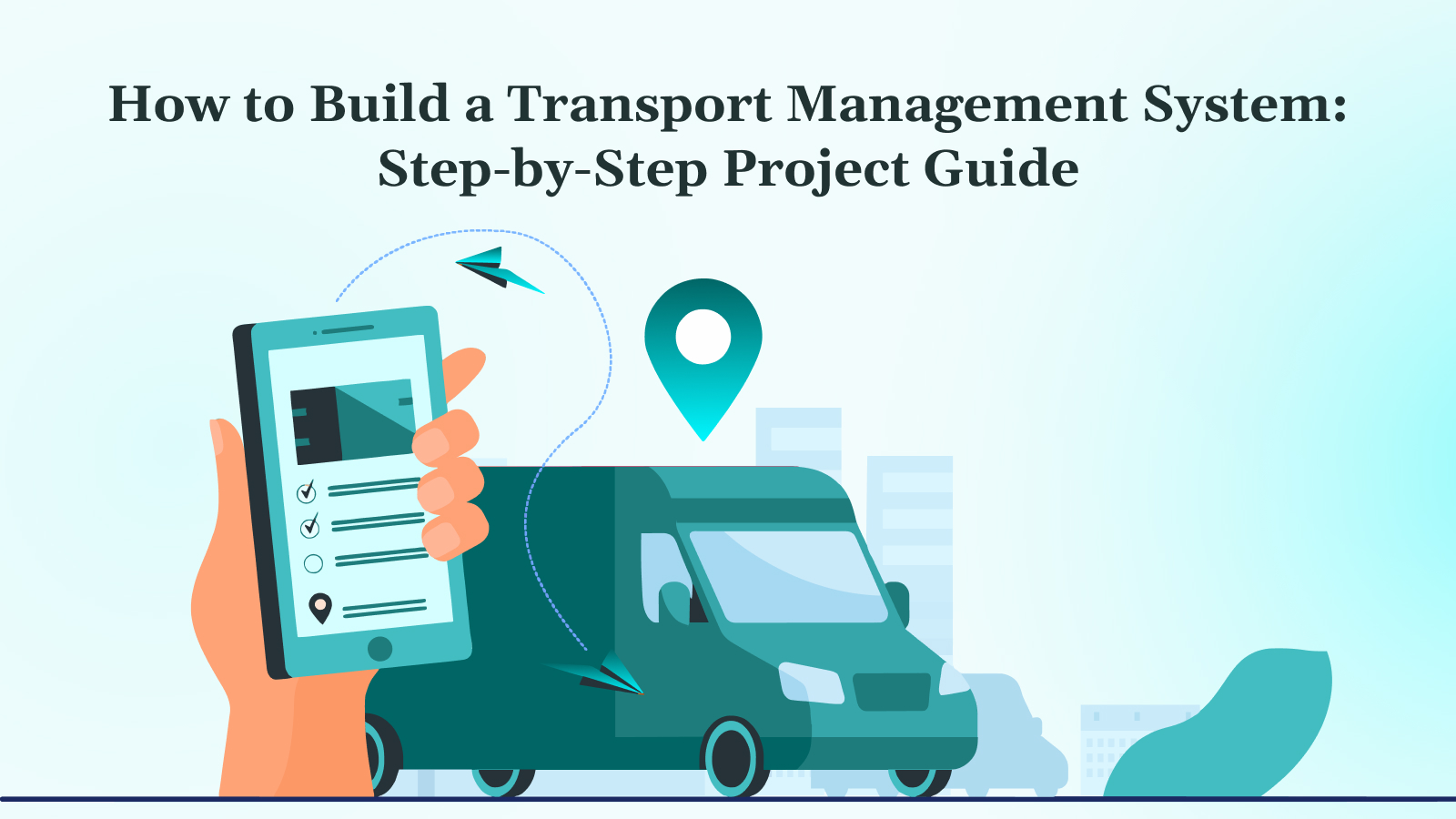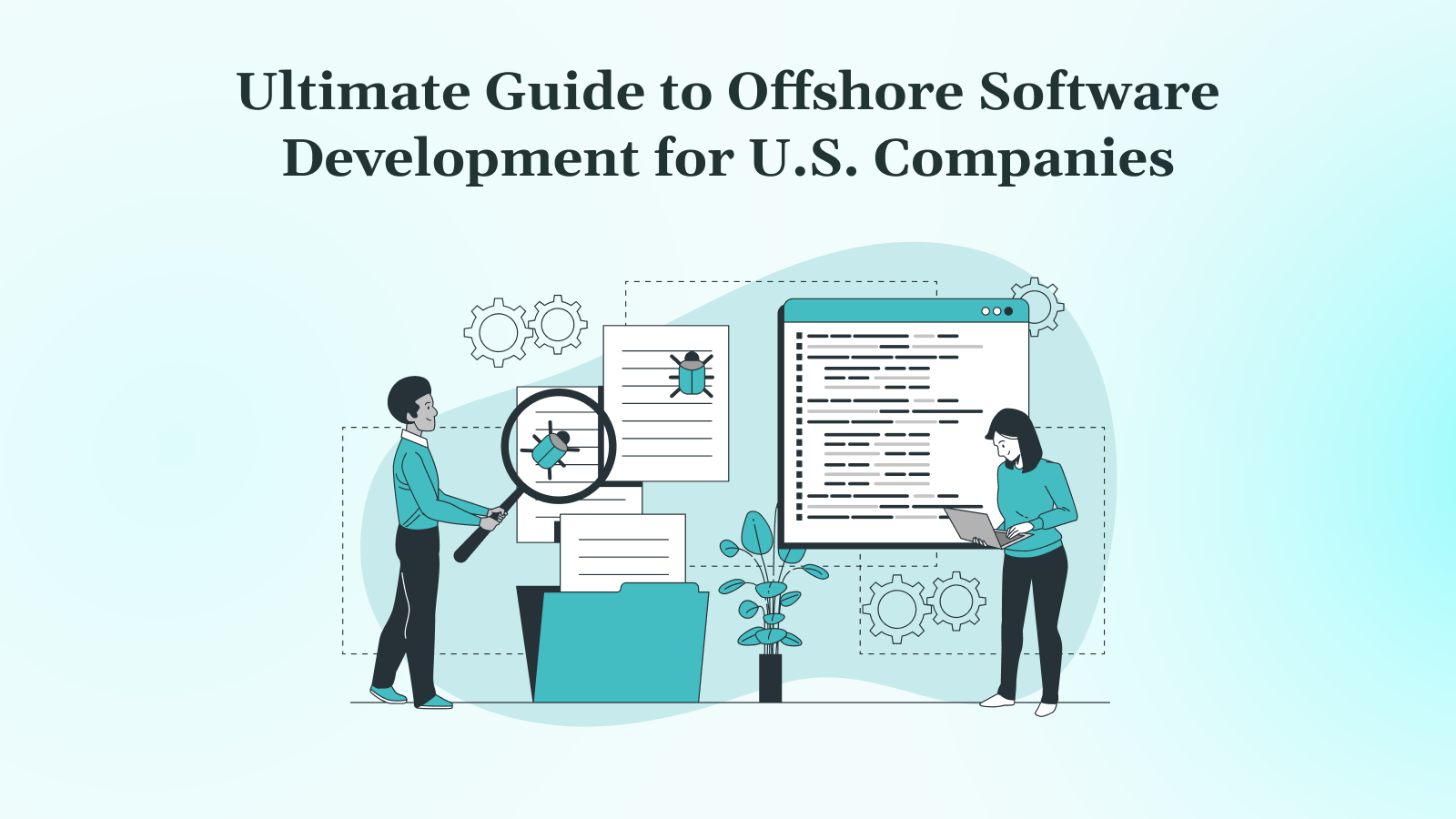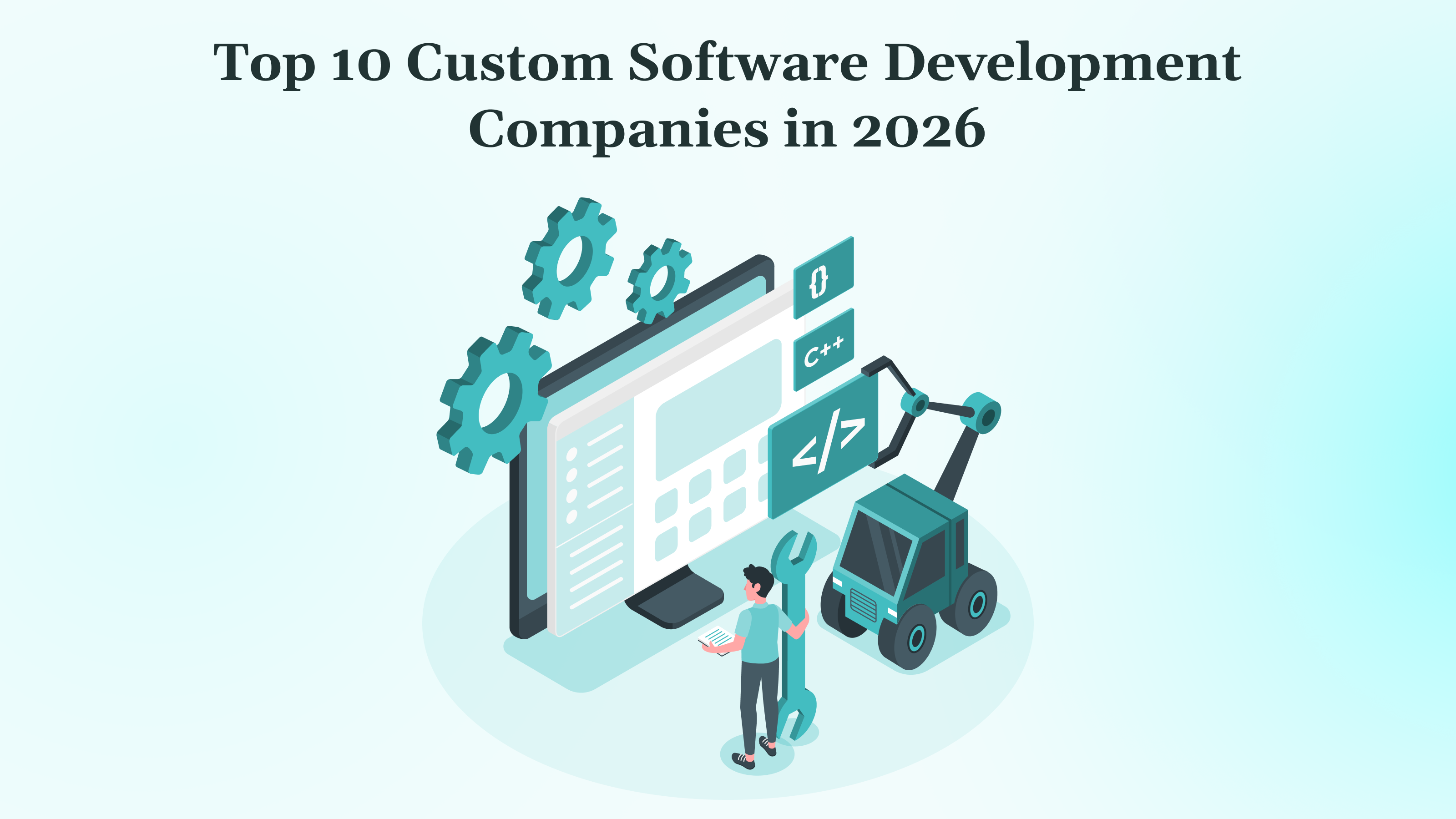Modern supply chains demand smarter transportation technologies. A Transport Management System (TMS) helps streamline planning, execution, tracking, and settlement. It fully aligns operations from warehouse to delivery. Implementing a TMS can unlock cost savings through route optimization, reduce delays via real-time visibility, and simplify carrier management.
This guide charts a clear path, from defining objectives through delivery and improvement. You will gain a structured framework, learn to tackle common challenges, and explore when custom solutions are the best fit. We shall begin by understanding what a transport management system is.
Key Takeaways
- A TMS centralizes transportation processes like planning, execution, tracking, and billing.
- Businesses, carriers, and 3PLs gain from reduced costs, better visibility, and automation.
- Core TMS elements include routing, dispatch integration, proof of delivery, freight audit, and analytics.
- Successful TMS projects follow staged planning, testing, training, and post-launch optimization.
- Customize or build your own TMS when off-the-shelf tools fall short; DEVtrust supports tailored integrations and deployments.
What Is A Transport Management System?
A Transport Management System (TMS) is a specialized software suite that enables businesses to plan, execute, and monitor the seamless movement of goods. It brings together route selection, carrier onboarding, dispatch, tracking, and freight payment into a unified system.
Operating atop enterprise resource planning and warehouse management systems, a TMS adds a layer of control over logistics workflows and shipment lifecycles. This further ensures accuracy and coordination.
In practice, TMS platforms streamline complex tasks. They calculate optimal routes, compare carrier rates, and automate key processes.
Operational teams gain tools for tendering shipments. These help them track vehicles in real time, and confirm proof of delivery, all with minimal manual intervention. The system also generates critical documents while handling settlement and reporting activities.
Most importantly, a well-implemented TMS delivers meaningful savings. According to research from Nucleus, organizations that deploy TMS solutions reduce transportation spend by an average of 11%. These savings come from route efficiency, load consolidation, automation, and data-driven carrier selection. In effect, a TMS transforms logistics from a fragmented cost center into an optimized, measurable asset for the business. Let us move on to know who benefits from transport management systems.
Who Benefits From Transport Management Systems?
TMS projects deliver value across multiple stakeholder groups in the logistics ecosystem. Businesses, shippers, carriers, and fleet operators all experience direct improvements in efficiency, cost control, and operational clarity. Below, we break down the key beneficiaries of a well-executed TMS implementation.
Businesses & Shippers
For companies that move goods, be it manufacturing firms, retailers, or e-commerce players, a TMS simplifies complex transport workflows. It automates tendering, rate comparison, and documentation, reducing manual effort and minimizing errors.
Integration with existing systems like ERP and WMS provides centralized control over order-to-delivery processes. As a result, shippers gain visibility, efficiency, and the ability to scale operations without adding staff to handle incremental volume.
Carriers & Fleet Operators
Carriers and fleet owners also gain from TMS adoption. They benefit from streamlined dispatching, automated EDI or API-based tendering, and mobile integrations that feed back real-time tracking and proof of delivery.
These systems improve utilization by enabling better load planning and consolidation, reducing empty miles. In turn, carriers build stronger partnerships with shippers through enhanced transparency and smoother operations.
This dual-sided advantage fosters an integrated transport network that operates more profitably and sustainably. So, let us understand why you should launch a transport management system project.
Why Do Businesses Launch A Transport Management System Project?
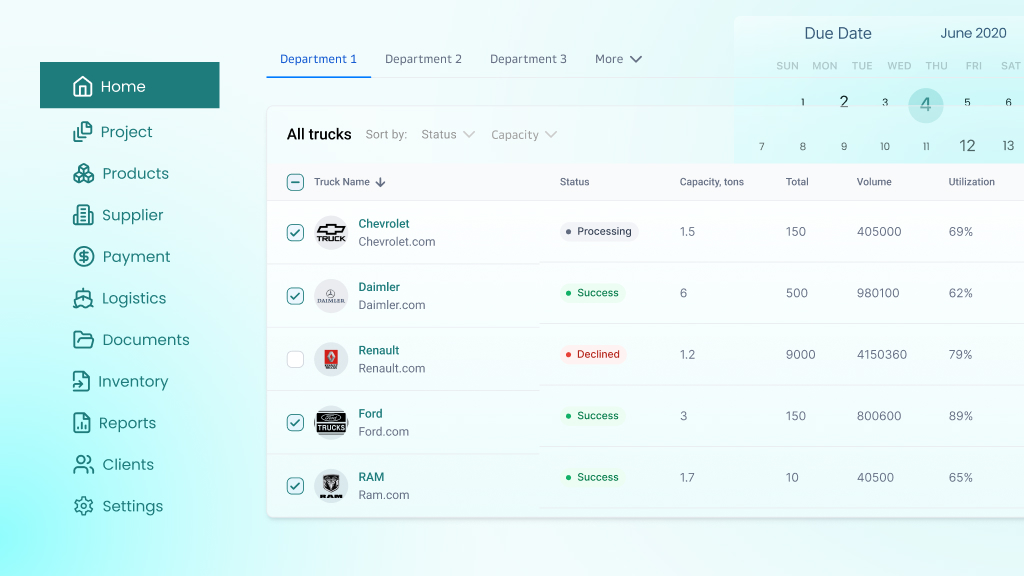
Launching a TMS project transforms your transport operations into a strategic asset. It addresses key challenges in cost, control, and carrier efficiency while scaling to modern logistics demands.
Cost‑Saving & Route Optimization
A TMS tackles fuel and route inefficiencies by using algorithm-driven planning to reduce mileage and idle time. Research indicates that intelligent route optimization cuts fuel costs and vehicle wear significantly.
Reducing empty miles and optimizing load capacity helps companies save in both time and resources. By leveraging these efficiencies, organizations turn transport spend into measurable profit drivers.
Real-time Tracking & Visibility
Visibility matters at every step of the journey. With real-time shipment tracking and automated alerts, TMS empowers teams to monitor progress actively, prevent delays, and communicate with customers or warehouses in real time.
Live visibility also supports dynamic route changes and proactive issue resolution. This transparency builds trust internally and externally, improving operations while raising customer satisfaction.
Carrier & Freight Management
Managing carriers and freight billing manually is slow and prone to errors. A TMS automates tendering, rate comparisons, and invoice reconciliation. TMS solutions reduce invoice discrepancies efficiently as well.
Better carrier performance tracking and automated freight audit practices help organizations avoid overcharges and cultivate stronger vendor partnerships. DEVtrust supplements transport management systems with advanced integrations and codebase fixes. Read about our case study with Moveit4U, where we helped them integrate role-based access for easier carrier integration.
Together, these benefits show how a TMS project delivers immediate and ongoing value. It moves logistics from reactive tasks to proactive, data-driven execution. Moving on, we have the key components of a transport management system.
Key Components Of A Transport Management System Project

A successful TMS implementation hinges on integrating several core components seamlessly. Each plays a vital role, from planning to insights, ensuring your system drives value across operations. Here is a breakdown of the essential elements:
Planning & Route Design
The TMS must determine optimal routes and consolidate shipments effectively. This module uses data on delivery windows, vehicle capacity, and traffic constraints to plan efficient transportation paths.
Strategic routing helps reduce operational costs and ensures timely deliveries. When set up properly, planning tools provide flexibility to adjust routes dynamically based on real-time constraints like weather or equipment issues.
Execution & Carrier Integration
Once routes are set, the system handles tendering shipments to carriers and confirming bookings. A high-functioning TMS integrates via API or EDI to exchange orders, rates, and dispatch updates.
It also supports direct communication with carriers for pickup scheduling and updates. This level of integration minimizes manual steps and errors, streamlining shipment flow significantly.
Tracking, Proof of Delivery, & Alerts
Real-time visibility is critical. TMS platforms track vehicles via GPS or telematics and capture proof of delivery through digital signatures or photos. Alerts notify stakeholders about delays, deviations, or missed windows.
This visibility enhances customer satisfaction and enables swift corrective action when delivery errors occur.
Freight Audit & Payment Automation
Invoice processing is automated by matching actual shipment data against contracted rates. The system flags discrepancies for review and streamlines carrier payments. This reduces billing errors and prevents overcharges.
Tight integration with accounts payable and ERP systems helps ensure accurate financial reconciliation at each billing cycle. DEVtrust complements your freight audits remarkably. Read our case study with Draydex, where we helped them with booking and rate management technology.
Reporting & KPI Analytics
The final piece is insight. TMS generates dashboards and reports on metrics like on-time delivery, cost per mile, and load utilization.
These insights support continuous improvement through performance benchmarking and trend analysis. Leaders use this data to refine carrier selection, route strategies, and operational policies over time.
These components are the foundation of a comprehensive TMS. Together, they enable optimized operations, reduced costs, seamless execution, and a culture of data-driven decision-making. Let us move to the stages in a transport management system project.
Stages in a Transport Management System Project
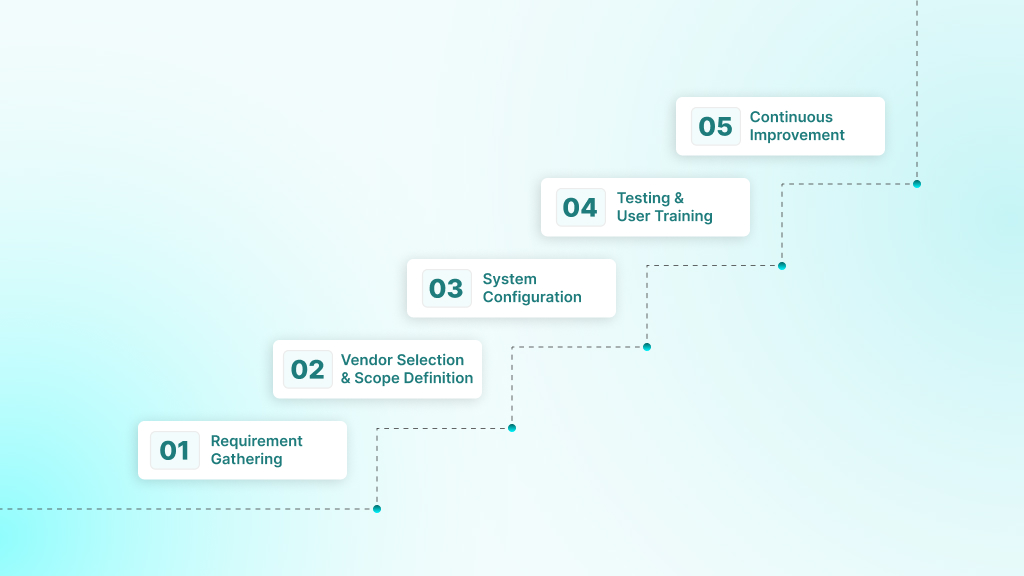
Launching a TMS requires a carefully sequenced process. Each stage builds on the previous to ensure a seamless, efficient rollout, from aligning stakeholders to refining system use post-launch.
Requirement Gathering & Strategy
Project success begins with clarity on goals, metrics, and business pain points. It is recommended to start with defined objectives, like route optimization or improved tracking.
Also, focus on aligning team members around desired outcomes such as on-time delivery and cost savings. This stage sets the strategic foundation and ensures the system meets both current and future transportation needs.
Vendor Selection & Scope Definition
Selecting the right TMS vendor involves more than price comparison. Project teams should evaluate vendor fit, experience in your industry, ease of integration, and roadmap flexibility.
Defining the scope here prevents scope creep later. A detailed RFP or shortlist driven by strategic needs and future roadmap ensures the vendor aligns with your objectives.
System Configuration & Integration
Once a vendor is chosen, the focus shifts to setup and integration. This phase includes data import, API or EDI connections with ERP/WMS systems, and configuring modules like routing and tendering.
Accurate mapping from legacy technology into the new TMS, plus clean, standardized data, helps prevent misrouting and delays during operations.
Testing & User Training
Thorough testing ensures the system works for real-world scenarios. There is great importance to scenario-based testing, especially to guarantee full operational readiness.
Alongside testing, training users through role-based sessions fosters adoption. Identifying power users (“super users”) helps lead peer training and resolve early issues proactively.
Go‑live & Continuous Improvement
Launching the TMS is just the beginning. A well-planned go-live phase includes support structures and monitoring of early issues. A period of dedicated support post-launch to fix gaps quickly is highly recommended.
Following that, continuous monitoring, feedback collection, and incremental enhancements ensure the TMS remains aligned with evolving operational needs.
These stages form a solid, expert-backed path to successful TMS implementation. Each step ensures minimal disruption and maximizes the value delivered by the system. Even so, there may be some common challenges in TMS projects.
Common Challenges in TMS Projects & How To Overcome Them
Acknowledging these common obstacles early in a TMS implementation helps prevent delays, missteps, and wasted budgets. Adopting proper measures during planning and execution stages ensures smoother delivery and better adoption.
Data Quality / Integration Issues
Many TMS projects stumble during integration. Legacy systems often use different formats, leading to inconsistent or incomplete data. Poor data quality affects nearly a third of software rollouts.
To overcome this, start with full data cleansing and mapping. Use built-in validation in the TMS and set up automated sync processes. Maintaining high data accuracy ensures your system works as intended and delivers reliable outcomes.
Change Management
Technology change fails without user buy-in. Staff may resist new interfaces or processes. Neglecting team engagement often leads to poor adoption.
Address this by involving employees early, like explaining benefits, collecting feedback, and tailoring training. Creating change champions within the team reinforces acceptance and builds momentum sustainably.
Budget Overruns & Customization Costs
TMS budgets tend to escalate when teams underestimate integration complexity or requirements. A majority of companies exceed projected budgets due to unexpected adaptation needs.
Control this by defining a clear scope at the outset. Avoid scope creep by freezing features before development. Include contingency planning and track every customization request to maintain transparency and avoid budget surprises.
Stakeholder Engagement & Governance
TMS implementations impact finance, operations, IT, and more. Projects with strong governance structures and cross-functional review demonstrate fewer issues post-launch. Establish a steering committee with clear roles and decision authority.
Hold regular sessions to review progress, address concerns, and approve scope changes. This structure keeps the project aligned, accountable, and on track.
By proactively addressing data integrity, organizational readiness, budget oversight, and governance, TMS projects stand a far better chance of delivering long-term value.
Best Practices For Running a Transport Management System Project
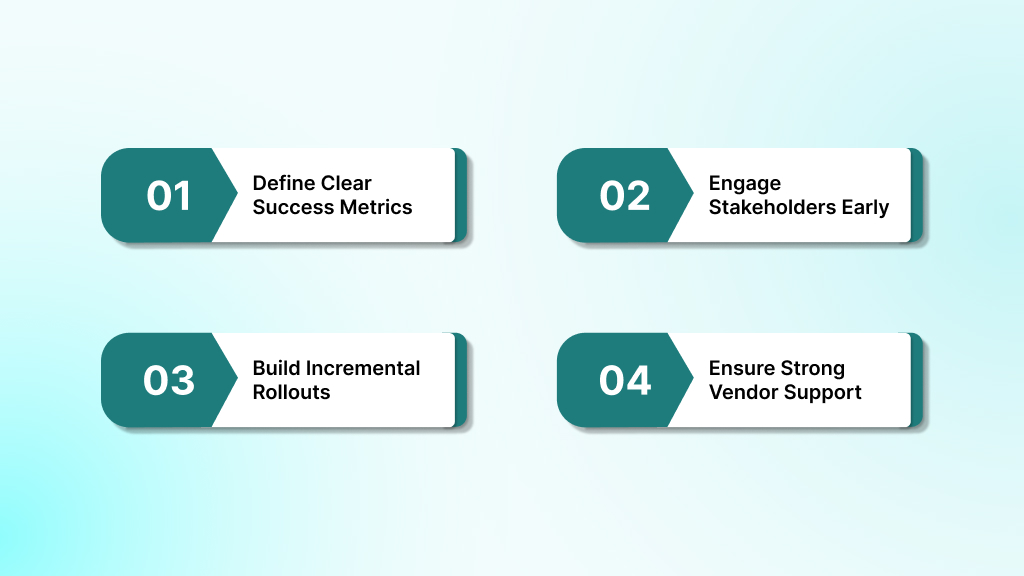
Effective execution of a TMS project depends on structured planning, cross-functional collaboration, and strong support. The following practices can help ensure your project delivers expected benefits and resilience.
Define Clear Success Metrics
Before work begins, teams must agree on measurable outcomes. That could include improved on-time delivery, reduced transport costs, or fewer billing discrepancies.
It is recommended to start setting SMART goals to align project efforts and measure progress. Defining these benchmarks early enables better decision-making and ensures ongoing clarity about whether the TMS is delivering value.
Engage Stakeholders Early
TMS projects affect multiple departments, including operations, IT, finance, and customer service. Involvement from all relevant teams helps surface diverse requirements and secures organizational buy-in.
Early engagement fosters smoother adoption. When stakeholders help shape the system from the outset, you are less likely to face feature resistance or missed expectations later on.
Build Incremental Rollouts
Rolling out a TMS in stages, such as starting with a single region, carrier type, or business unit, lets teams iteratively validate processes, resolve issues early, and minimize disruption.
A phased approach reduces risk, keeps training manageable, and allows performance evidence to support broader adoption. This method also enables refinement before wider deployment, improving overall project quality.
Ensure Strong Vendor Support
Reliable vendor support is essential, especially during configuration, training, and go-live. Vendors should offer hands-on assistance and clear escalation pathways. Dedicated support in the initial weeks post-launch helps quickly solve issues.
DEVtrust complements this with tailored integration services, ongoing monitoring, and scalable architecture, all engineered to reduce downtime and drive long-term success.
By following these structured practices, you build the foundation for a streamlined TMS project. Combined with partner support from DEVtrust, these guidelines help ensure dependable transport performance and measurable gains throughout your rollout. Is there a scenario where you should build a custom TMS?
Should You Build a Custom TMS?
Sometimes, off-the-shelf TMS tools do not align with a company’s unique workflows or integration needs. In such cases, custom solutions offer precision. Companies with complex routing rules, strict compliance, or niche carrier agreements benefit most from bespoke development. A custom TMS delivers exactly what your operation requires.
Unique Business Processes
When your workflows do not fit standard templates, custom TMS solutions adapt to your flash-point needs. These can be handling special load types, regulatory rules, or complex multi-leg shipments. You design the workflow; the system supports it.
Scalability for Growth
Plans to expand routes, modes, or carrier mixes demand a flexible system. Custom TMS allows evolution without compromise, letting you add features or integrations smoothly as volume scales.
Tailored Integration Needs
Standard tools often struggle with complex API, EDI, or ERP/WMS linkages. Custom development ensures systems communicate effectively, eliminating manual data handling and errors.
Competitive Differentiation
When logistics form part of your competitive edge, off-the-shelf tools may limit innovation. Custom TMS solutions enable proprietary functions like advanced route logic, dynamic pricing, or compliance checks built to outperform competitors.
Regulatory Compliance Flexibility
Highly regulated transport sectors need custom reporting, audit trails, or operational controls. Bespoke TMS frameworks make compliance part of your system, no bolt-ons or manual workarounds.
A custom TMS is not for every case, basic needs may be covered by configurable platforms. But when precision, flexibility, and control matter, custom builds are the best fit. That is where DEVtrust steps in. We look after your custom software development needs so you can focus truly on the transport operation. With experience in transport, logistics, and ERP environments, we offer:
- Tailored architecture to match your logistics workflow end-to-end
- Built-to-spec API/EDI integration with core systems and carriers
- Scalable development on reliable cloud infrastructure
- Long-term governance, maintenance, and feature roadmap support
For businesses that demand more from their transport system, DEVtrust helps turn complex logistics into a competitive advantage.
Conclusion
Implementing a Transport Management System transforms your logistics operations into a coordinated, data-driven engine. Whether optimizing routes, automating freight audits, or enabling real-time tracking, a well-executed TMS project delivers lasting operational resilience. With clear planning stages, stakeholder engagement, and proper vendor or partner support, your system can evolve alongside your business needs.
If your transportation demands exceed what standard platforms can offer, personalizing a TMS becomes essential. That’s where a skilled partner makes all the difference.
DEVtrust can build integrations and workflows that scale effortlessly. Explore how DEVtrust can support your system long term, along with maintenance, optimization, and upgrades.
Transport Management System Project: From Planning To Deployment
Learn how to plan and optimize a transport management system project today, from route design to deployment. Discover when custom builds make more sense.
Contact Us